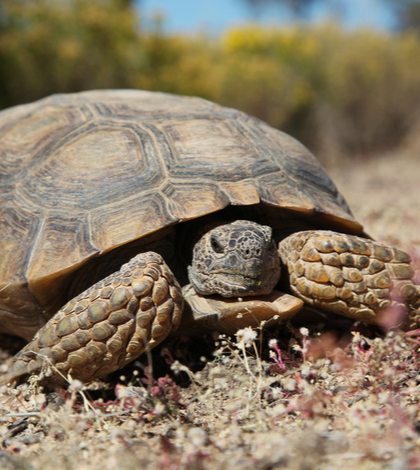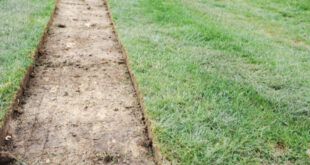The once common desert tortoise has had a rough road in the past 20 years and one California desert landowner has – and is – going above and beyond to ensure the well-being and conservation of the iconic desert tortoise. Though the desert tortoise has been around for millions of years, a variety of factors have resulted in the desert tortoise’s threatened status. In conjunction with several governmental entities and the San Diego Zoo, Cadiz Inc. stands at the forefront in helping to protect the desert tortoise (Gopherus Agassizii).
In 2015, approximately 7,400 acres of Cadiz Inc.’s private land holdings in eastern San Bernardino County were set aside for the permanent protection of habitat for the desert tortoise. The Fenner Valley Desert Tortoise Conservation Bank is the largest-ever land bank to be approved by the California Department of Fish and Wildlife (CDFW) for the protection of the tortoise. Under the Bank enabling documents, parties that may impact the tortoise in other parts of the California desert can purchase credits that will fund the permanent protection of the tortoise at the Bank properties. Cadiz will also place a permanent easement on its private land prohibiting development.
The Mojave desert tortoise is the largest surface-dwelling turtle in the United States and is key to the Mojave Desert ecosystem. The desert tortoise was declared a threatened species in 1990 by the U.S. Fish and Wildlife Service.
The desert tortoise is found in the areas north and west of the Colorado River in California, Nevada, Arizona and Utah. But their population has declined some 90 percent in the last 20 years due to new housing developments and solar energy projects, off-road vehicles that fail to heed recreational rules and/or run over the tortoises as well as the region’s increasing human garbage that attracts ravens, feral dogs and other animals that seek out and kill the desert tortoises, young and old.
To further the conservation of the desert tortoise Cadiz and its Fenner Conservation Bank have signed a Memo of Understanding with the San Diego Zoo to assist in the development of conservation management strategies for the desert tortoise and other conservation-dependent wildlife within the bank’s acreage. The Zoo’s research staff are renowned for their work related to species conservation and the reintroduction of native species to the wild, including its successful work with California condors, kangaroo rats and the desert tortoise. The Zoo is presently evaluating a tortoise reintroduction program for the Cadiz Fenner site.
“We’re pleased to be working with the Zoo to aid in the conservation of the desert tortoise,” said Courtney Degener, Cadiz Inc. vice president and spokeswoman. “This gentle reptile is a lynchpin in the Mojave Desert, which is why we have worked hard to ensure all of our projects absolutely do no harm to the tortoise. We’ve been concerned about the limited public resources available to defend them from threats and are hopeful the Bank and our work with the Zoo can assist in their long-term protection and revitalization.”
Cadiz, which owns over 70 square miles of property in the eastern Mojave Desert portion of San Bernardino County, manages various businesses in the oft-perceived barren desert. But their Cadiz Valley property is home to large agricultural development including permanent crops – lemons and certified-organic dried-on-the-vine raisins – as well as seasonal crops such as squash, melons, peppers, asparagus, and other fruits and vegetables. The Cadiz property has significant groundwater resources and the company has pursued water and storage projects, as well as cultural projects including a tourist-based steam train.
Cadiz’s properties dedicated to the Fenner Valley Tortoise Bank are in a separate watershed from its Cadiz Valley agricultural properties. The Bank is approximately 30 miles away in an area known as Piute, near Needles, and is in critical desert tortoise habitat.
Currently, Cadiz is awaiting final certification by the federal government for their Cadiz Valley Water Conservation, Recovery and Storage Project. The project is designed to provide a reliable water supply in Southern California by conserving water that otherwise would have been lost to evaporation at desert hypersaline dry lakes. The project also offers the ability to store groundwater supplies and imported surplus water in wet years. Although the most recent five-year drought is behind us, Californians are now keenly aware of the need to conserve water and plan for the next inevitable drought.
 California Water News Daily Your Source For Water News in California
California Water News Daily Your Source For Water News in California


